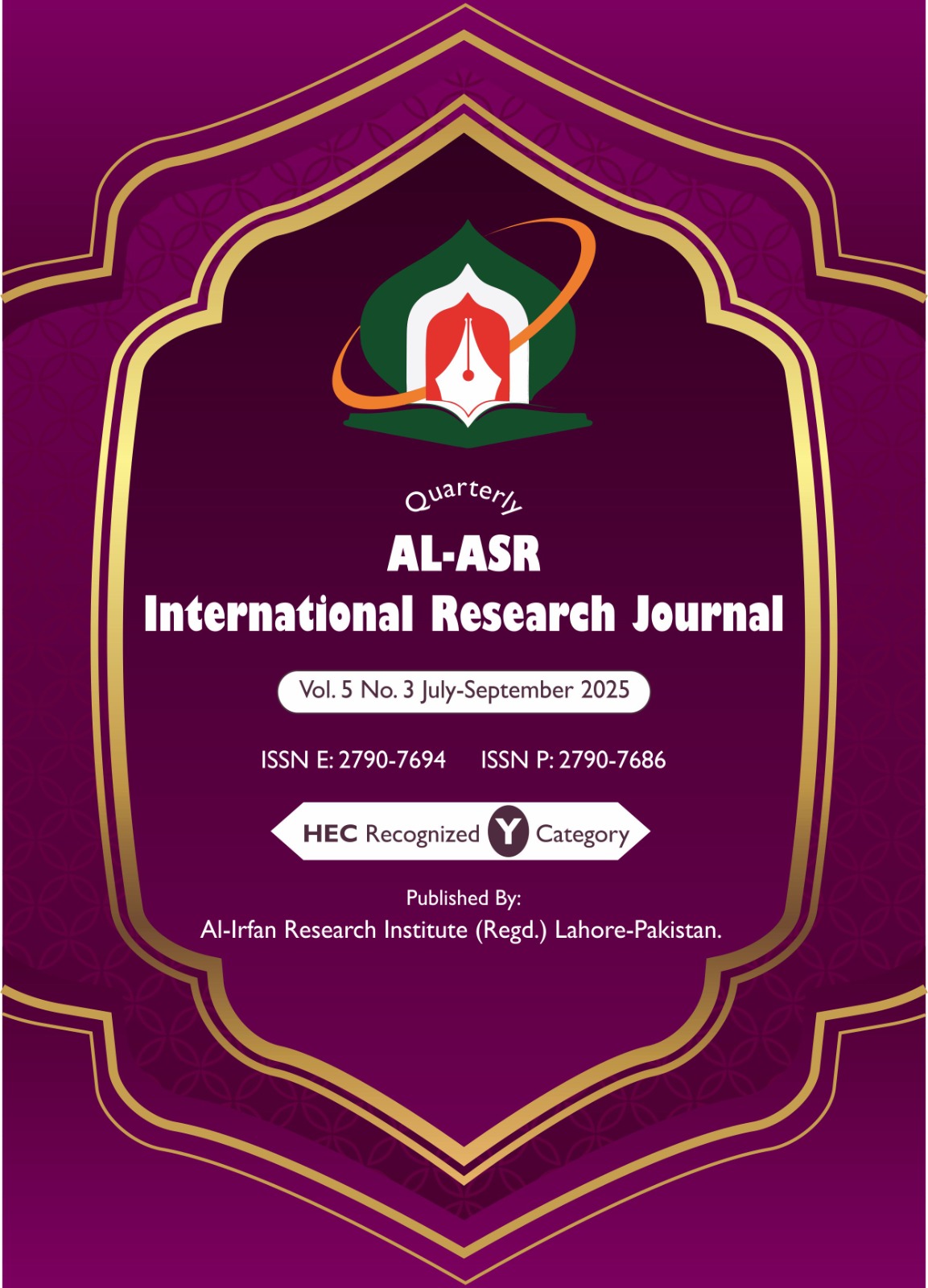A Comparative Study of Symbolic Exegesis in Tafsīr al-Tustarī and Laṭāʾif al-Ishārāt
تفسیر تُستری اور لطائف الاشارات کے اشاری مباحث کا تقابلی مطالعہ
Abstract
This study explores a comparative analysis of the esoteric or allusive themes (ishārī mabāḥith) found in two of the most prominent Sufi Qur'anic commentaries: Tafsir al-Tustarī by Sahl ibn ʿAbdullāh al-Tustarī and Laṭāʾif al-Ishārāt by Abū al-Qāsim al-Qushayrī. Both works represent early and mature phases of Sufi exegesis, offering spiritual interpretations beyond the literal meaning of the Qur'an. The introduction provides a brief historical and intellectual background of both exegetes and situates their works within the broader tradition of tafsīr ishārī. The core research question guiding this study is: How do Tafsir al-Tustarī and Laṭāʾif al-Ishārāt differ and converge in their presentation of esoteric Qur'anic themes? Methodologically, this research adopts a qualitative and comparative textual approach, analyzing selected verses interpreted by both scholars and categorizing their spiritual insights thematically.
The study highlights the nuanced ways in which mystical concepts such as maʿrifah (gnosis), tawḥīd (divine unity), fanāʾ (annihilation), and mujāhadah (spiritual struggle) are treated. For students of Qur'anic exegesis, particularly those interested in spiritual hermeneutics, this research offers valuable insights into how early Sufis engaged with the Qur'an, and how their distinctive approaches contribute to the multidimensional understanding of the sacred text.
Keywords: Ishārī Mabāḥith, Tafsir Al-Tustarī, Sahl Ibn ʿAbdullāh Al-Tustarī And Laṭāʾif Al-Ishārāt By Abū Al-Qāsim Al-Qushayrī









